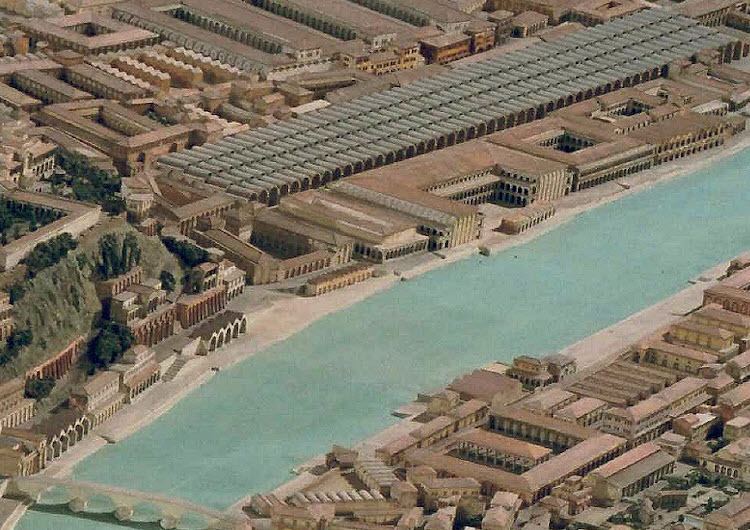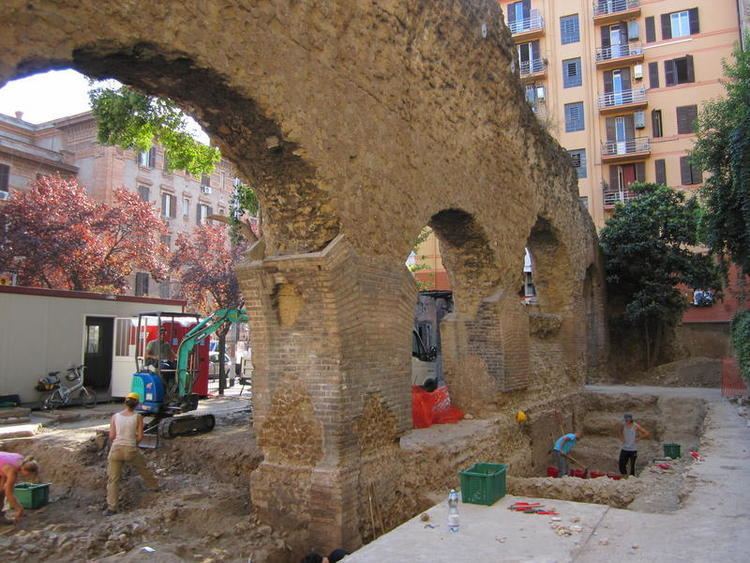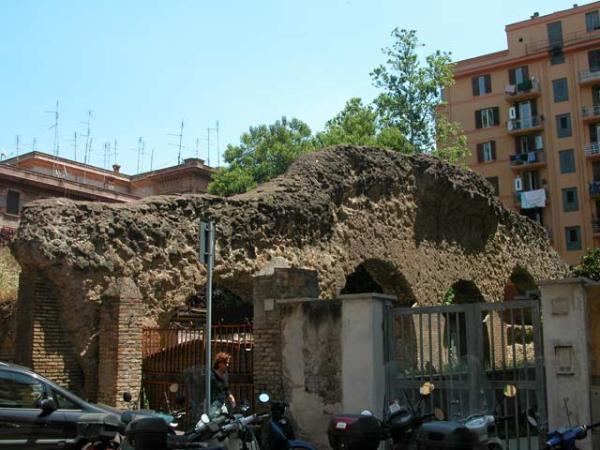Opened 193 BC | ||
 | ||
Architectural style Ancient Roman architecture Similar Emporium, Horrea Galbae, Monte Testaccio, Monte dei Cocci, Saepta Julia | ||
Porticus aemilia
Heinrich dressel porticus aemilia
History and description

The portico was built in 193 BC by aediles Marcus Aemilius Lepidus and Lucius Aemilius Paulus (from which the name associated to the gens Aemilia; Livy, 35.10.12), and was rebuilt in 174 BC by censors Quintus Fulvius Flaccus and Aulus Postumius Albinus (Livy, 41.27.8).

Sources do not mention the early function of the portico, that rose close to the Emporium, the river port of the town, arguably placed near Aventine Hill. It has been suggested to identify the portico with the remains that rise between Via Beniamino Franklin and Via Marmorata: some surviving opus incertum tuff walls are still visible in Via Branca, Via Rubattino and Via Florio. In 2006 an alternative proposal identified these structures with the republican Navalia, that, in their former period, were destined to house the war ships of the Roman navy. Excavations carried out, starting from 2010, by the Soprintendenza Speciale per i Beni Archeologici di Roma, in cooperation with the Reale Istituto Neerlandese di Roma and the I Municipio, haven't still acquired useful informations in support of this identification, but not even in support of the identification with the Porticus Aemilia quoted by literary sources (it could just be a porticoed street, between Porta Trigemina and the Emporium, and not a warehouse).

The opus incertum building was very large, 487 metres (1,598 ft) long, 60 metres (200 ft) large and divided into several rooms by 294 pillars, that formed seven rows depthwise and 50 naves, each covered by a series of overlapping vaults 8.30 metres (27.2 ft) large; the total covered surface was 25,000 square metres (270,000 sq ft). The distance between the building and the river - where, maybe since the last Republican age, the wares uploaded from the boats were stocked - was about 90 metres (300 ft). From an architectural point of view, the utilitarian edifices were very interesting for Roman architects, as in this kind of building they could experiment with the building materials trying to discover new applications.
During Trajan age or later, other edifices were interposed between the river and the opus incertum building.


